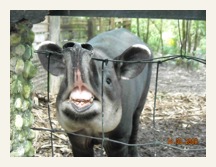We have over 35 years of travel experience in Guatemala, Belize, Honduras, and Mexico (Yucatan, Chiapas, Campeche, Quintana Roo, Tabasco, Oaxaca) to help you design an educational tour to suit your interests! We specialize in archaeology and anthropology in concert with the natural history of the area. We design in-depth itineraries, customized just for couples, private groups, schools, and organizations.
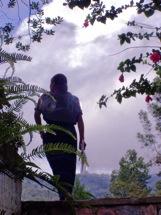 From the splendor of the colonial area when the Spanish Capital of all of Central America was in Antigua, Guatemala; the breathtaking scenery of mountains and lakes; the thriving and colorful culture of the indigenous peoples with their markets and unique lifestyle; the awe-inspiring ruins of the mysterious Maya civilization; there is no area in the world that has so much to offer the visitor in so small an area. Where else can you go from the depths of steaming tropical jungles to cold volcano peaks in a matter of hours?
From the splendor of the colonial area when the Spanish Capital of all of Central America was in Antigua, Guatemala; the breathtaking scenery of mountains and lakes; the thriving and colorful culture of the indigenous peoples with their markets and unique lifestyle; the awe-inspiring ruins of the mysterious Maya civilization; there is no area in the world that has so much to offer the visitor in so small an area. Where else can you go from the depths of steaming tropical jungles to cold volcano peaks in a matter of hours?
And as if this were not enough, Guatemala's ideal climate has gained it the name of "The Land of Eternal Spring." With it's verdant and diverse ecosystems "Guatemala" is true to its name origin - which came from the Nahuatl word, Cuauhtēmallān, or "place of many trees" - itself a translation the word in Mayan K'iche' for "many trees."
Guatemala's traditions go back to pre-history, and its captivating legends are passed from generation to generation. Emerging from its mystical past, The Maya World today offers an excellent infrastructure of fine hotels, restaurants and transportation. With all this and much more, The Maya World is truly a dream destination. It’s without doubt that a visit will be exciting and unique, with incredible experiences to capture your imagination and create indelible memories.
Like many developing countries, Guatemala also has more than its share of poverty. Tourism is the nation's second largest origin of revenue. In 2011, 1.8 million tourists visited the country and the government hopes to increase this number to 2.8 million per year by 2022. Your travel there will have a positive impact on the economy and will help people's lives.
Explorations is happy to help couples and groups with custom itineraries. Below is a great introductory tour of 8 days, called Discover Guatemala that we can operate any week. If you have longer or specific interests, we can create itineraries to suit - see below for options and ideas.

DISCOVER GUATEMALA
8 Days itinerary, starting and ending in Guatemala City
Includes: ANTIGUA, CHICHICASTENAGO, LAKE ATITLAN, and TIKAL
DAY 1 (Thursday) Antigua
Upon arrival at La Aurora International Airport in Guatemala City, reception, a brief sightseeing tour of the capital city, you then are transfered to the Hotel Casa Santo Domingo, or similar, for two overnights in ANTIGUA. Guatemala's ancient capital city is rich in history with colonial churches and buildings dating back to the 1500's and is designated by UNESCO as a World Heritage Site.
DAY 2 (Friday) Antigua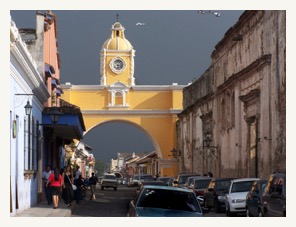
Antigua is a true colonial gem, and this morning you will visit the principal sights on foot with a local historian. The walking tour will include centuries-old churches, convents and plazas. Many buildings have been beautifully restored, while others remain as they were after the devastating earthquakes of 1773 and 1976. After lunch, you experience an encounter with the some of the world’s best coffee at the Filadelfia Coffee Plantation. Guatemala is one of the few countries still producing coffee under shade trees, which provides a natural habitat for innumerable birds, small mammals and insects, as well as lengthening the ripening period, making it the finest coffee in the world. The farm is located in a beautiful valley close to the village of San Felipe and this fascinating guided tour explains all the aspects of coffee production, from planting, picking, drying and roasting, to selling on the world’s coffee markets. A morning city tour of the colonial architecture will provide a background for Antigua's long and fascinating history. The late afternoon and evening are free for personal exploration, relaxation, shopping, and/or museums. Stroll around the main plaza and cobblestone streets, visit the markets and various interesting shops, all while enjoying the views of the neighboring volcanoes and splendid historic architecture. (B)

DAY 3 (Saturday) Antigua to Chichicastenango
Morning at leisure in Antigua for personal explorations, relaxation, and shopping. In the afternoon, you are transfered high into green mountains to the Mayan town of CHICHICASTENAGO . There you can visit some of the simple colonial churches where preparations are being made ready for tomorrow’s market. Overnight is at the enchanting Hotel Santo Tomás, or similar. (B)
DAY 4 (Sunday) Chichicastenango to Lake Atitlán
This morning we suggest you arise very early in order to witness the unique indian religious ceremonies at the church of Santo Tomás. Later, you can enjoy the most famous open-air market in Central America, where you will find a great variety of handicrafts and antiques at incredibly low prices. The day is free to explore this colonial town’s architecture, churches, shops and witness age old traditions and rituals. In the afternoon, is a drive through the cloud forested mountains to PANAJACHEL, on the shores of picturesque Lake Atitlán, nestled amidst towering volcanoes. Your overnight is at the lovely Hotel Atitlan, or similar. (B)
DAY 5 (Monday) Lake Atitlán to Guatemala City
LAKE ATITLAN has been described as the most beautiful lake in the world. It is certainly unique and spectacular, surrounded by three impressive volcanoes. This morning, you travel with guide by launch across the calm waters to visit the fascinating lakeside, Tzutuhil Mayan village of Santiago Atitlán, to be surrounded by a beautiful scenery of natural and man-made colors. In the afternoon we transfer back to GUATEMALA CITY for overnight at the Hotel Westin Camino Real, or similar. (B)
Day 6 (Tuesday) Guatemala City to Tikal
Morning transfer to the airport to board your flight to FLORES. On arrival, you will be met at the airport and transferred to TIKAL NATIONAL PARK and the Tikal Jungle Lodge for two overnights. After lunch, you have a guided tour for an introduction to this important Mayan center. Your tour guide will take you back hundreds of years to the glory that was the seat of the Maya Culture. Visit Complex Q, Temple of the Great Jaguar, Temple of the Masks, Temple IV, and the Lost World Complex. You will walk the ancient Mayan roads, or sacbes, and tour the principal pyramid groups. Interpretations of the iconography on the existing stelae will help bring the ancient rulers back to life. You can climb the pyramids and try to envision an ancient city of possibly up to 100,000 people. Also, you may follow the monkey troops such as the boisterous howler monkeys from tree to tree in the overhead forest canopy and recognize the abundant birds and wildlife. At the Tikal Jungle Lodge, you will be staying within easy walking distant of "downtown" Tikal. Tikal is often considered the most spectacular of the ancient Mayan cities. Surrounded by a vast rainforest, the site of Tikal has been protected as a park for over 75 years and has been declared a "World Cultural and Natural Monument". The park offers some of the very best wildlife viewing in all of the Mundo Maya for howler monkeys, spider monkeys, foxes, kinkajous, macaws, toucans, parrots, a myriad of beautiful butterflies and much more! (B/L)
Day 7 (Wednesday) Tikal to Guatemala City
The first half of the day is free for personal explorations of the expansive Tikal ruins and the site museum (or you may arrange an optional guided tour). The site entrance fee is included. You will have an opportunity to stroll the jungle trails, climb the temples, and see monkeys, tropical birds and admire the Amazon-like rainforest flora. After lunch, you have a late afternoon transfer back to the Flores airport for your return to Guatemala City for overnight at the Hotel Crowne Plaza, or similar. (B) (Note: Lunch is not included to allow you more flexibility on timing.)
Day 8 (Thursday) Guatemala City
Day at leisure. Transfer to the airport for your flight out. (B)
SERVICES INCLUDED
All airport / hotel transfers / ground transportation as listed
All lodging, including hotel taxes as listed
Guided tours as described in trip brochures including entrance fees
Meals as listed (Breakfast / Lunch / Dinner)
Does NOT include international or roundtrip flights from Guatemala City to Flores
COSTS
Estimate $1,480 to $1,58o per person in double occupancy. We will provide an exact quote based on dates and number traveling. We can operate this program with two or more participants. Trip extensions are available to such wonderful places as Quirigua, Copan, the Rio Dulce and more.

EXPLORE GUATEMALA
15 Days itinerary, starting and ending in Guatemala City
An active overview of Guatemala for groups looking for something more comprehensive. Perfect for all academic field schools!
ITINERARY OUTLINE:
DAY 1, TUESDAY
Arrive in Guatemala City International Airport and transfer to hotel for 2 nights accommodation. Upon arrival visit the highly significant Mayan archaeological site Kaminal Juyu and return to hotel for dinner. Overnight at Best Western Hotel Stofella in Zona Viva.
DAY 2, WED
Visit of some of the most important sites in Guatemala City: the Archeology Museum, the National Palace and Cathedral, and the Relief Map of Guatemala which highlights the varied topography and outline of the journey. Overnight at Hotel Stofella.
DAY 3, THU
After breakfast at the hotel, the group will drive through the country’s highlands in order to visit one of the most colorful markets in the region, the market of Chichicastenango, as well as Santo Tomas Church which combines Mayan religious beliefs with those of Roman Catholicism. We will have time to explore this world famous Mayan market. Lunch at the lovely Santa Tomas Hotel. Late in the afternoon, we will drive to Panajachel, one of the towns surrounding Lake Atitlan, for 2 overnights at the Posada Don Rodrigo.
DAY 4, FRI
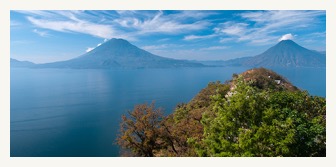 Breakfast at the hotel at sunrise. Board a boat to visit the village of Santiago Atitlan. Here the group will visit the local market, and the local church famed for it huge altarpiece which combines Maya and Roman Catholic iconography. Back to the hotel for lunch. Free afternoon to explore Panajachel. Meet back at the hotel for dinner. Overnight at Posada Don Rodrigo.
Breakfast at the hotel at sunrise. Board a boat to visit the village of Santiago Atitlan. Here the group will visit the local market, and the local church famed for it huge altarpiece which combines Maya and Roman Catholic iconography. Back to the hotel for lunch. Free afternoon to explore Panajachel. Meet back at the hotel for dinner. Overnight at Posada Don Rodrigo.
DAY 5, SAT
Morning departure to Antigua for 2 overnights. First drive to Tecpán to see the Post-Classic Maya archaeological site of Iximché and learn of its incredible history as the capital of the Kachiquel Maya at the time of the Spanish Conquest. Lunch at the amazing Katok restaurant. In the afternoon, in Antigua, walking tour around the main plaza and some of the historical buildings. Overnight at Posada Don Rodrigo.
DAY 6, SUN
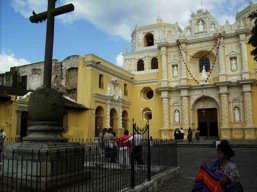 All day to explore and tour Guatemala's ancient capital city of Antigua, rich in history with colonial churches and buildings dating back to the 1500's. A morning guided city tour of the colonial architecture will provide a background for Antigua's long and fascinating history. The late afternoon is free for personal exploration, relaxation, shopping, and/or museums. You may stroll around the main plaza and cobblestone streets. Overnight at Posada Don Rodrigo.
All day to explore and tour Guatemala's ancient capital city of Antigua, rich in history with colonial churches and buildings dating back to the 1500's. A morning guided city tour of the colonial architecture will provide a background for Antigua's long and fascinating history. The late afternoon is free for personal exploration, relaxation, shopping, and/or museums. You may stroll around the main plaza and cobblestone streets. Overnight at Posada Don Rodrigo.
DAY 7, MON
Scenic travel (about 5 hours) through the mountainous wilderness to Lanquin for 2 overnights. Lunch stop and leg stretch at the beautiful Natural Reserve Ram Tzul located in the Purulha cloudforest. Continue on to Lanquin for 2 overnights at El Recreo Ecolodge.
DAY 8, TUE
 A day tour to nearby Semuc Champey, where the churning Rio Cahabon disappears beneath a huge limestone arch. Day to play in the waters and enjoy the nature. The spray from the river has filled a series of aquamarine pools of exceptional beauty. Semuc Champey is a great place to swim, hike, and learn about a unique geological system. This is considered the most spectacular natural area in Guatemala. Overnight El Recreo.
A day tour to nearby Semuc Champey, where the churning Rio Cahabon disappears beneath a huge limestone arch. Day to play in the waters and enjoy the nature. The spray from the river has filled a series of aquamarine pools of exceptional beauty. Semuc Champey is a great place to swim, hike, and learn about a unique geological system. This is considered the most spectacular natural area in Guatemala. Overnight El Recreo.
DAY 9, WED
Scenic ravel (about 5 hours) northward out of the mountains into the jungle lowlands of the Petén for 3 nights stay in the island of Flores at La Casona de la Isla. You will have the afternoon free to relax and visit the little Island of Flores, a picturesque town on an island in the Lake Petén Itza. Gather for dinner at hotel.
DAY 10, THUR
 Visit one of the most important archeological sites in Guatemala: Tikal National Park. Tikal is considered one of the greatest Mayan archaeological sites. Much of Tikal lies hidden below the encroaching jungle. Wildlife is abundant at Tikal and the group will be able to climb the most impressive Mayan pyramids and learn about the importance of the Mayan Civilization. Overnight at La Casona de la Isla.
Visit one of the most important archeological sites in Guatemala: Tikal National Park. Tikal is considered one of the greatest Mayan archaeological sites. Much of Tikal lies hidden below the encroaching jungle. Wildlife is abundant at Tikal and the group will be able to climb the most impressive Mayan pyramids and learn about the importance of the Mayan Civilization. Overnight at La Casona de la Isla.
DAY 11, FRI
With road conditions permitting, today is a tour to Uaxactún. This remote Mayan site is that’s notable for its astronomical observatory and early architecture. If road conditions do not permit the travel there, then you have a second day to explore in Tikal National Park. Overnight at La Casona de la Isla.
DAY 12, SAT
Early morning departure and drive to tour the archeological sites of Yaxha & Topoxte, famous from the TV show Survivor. Here, the group will enjoy climbing the Mayan temples and admiring the site’s wildlife. After that, the group will depart to Lake Izabal for 2 overnights at Nanajuana Hotel and Marina.
 DAY 13, SUN
DAY 13, SUN
Visit of the isolated Caribbean village of Livingston, reached by boat. The jungle river cruise will take you down the Rio Dulce along rainforest-covered cliffs reaching hundreds of feet in height. Along the way you will have the chance to swim near waterfalls that flow with hot water generated by the geothermal activity of the region. During your time at Livingston, you will enjoy the Garifuna culture found no where else in Guatemala. The Garifuna mix elements of Hindu and Caribbean Indian culture. Overnight at the Nanajuana Hotel and Marina.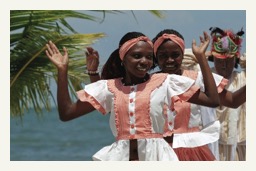
DAY 14, MON
This morning, travel back to Guatemala city for the overnight. Enroute, stop at the Maya center of Quiriguá. Quiriguá is renowned for its stele, carved pillars rising over 30 feet in height. Here, where you will witness the tallest stelae (35 feet) of the Mayan world and zoomorphic geoglyphs that are sure to astound - its iconography is some of the best in the Mundo Maya! This day’s geography varies from lowland jungle to verdant highland forests to dry, desert-like valleys and mountain ranges. With time permitting, you can have a quick stop along the way to stretch and learn at the Estanzuela Paleontology Museum, near Rio Hondo.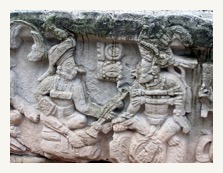 Overnight in Guatemala City at Hotel Stofella.
Overnight in Guatemala City at Hotel Stofella.
DAY 15, TUE
Transfer Guatemala Hotel to airport. Fly from Guatemala City and flights home.
NOTE: A 2 or 3 day extension to Copan in Honduras is recommended to compliment the program.

GUATEMALA TOUR OPTIONS
Every country has its own beauty and diversity and these are sometimes over-used words in the travel industry. However, Guatemala because of its varied geography and peoples epitomizes the words. The country's diverse geography has led to a multitude of ecosystems (14 ecoregions)and beautiful scenery, with dramatic mountains, misty cloudforests, lush rainforests, outstanding lakes, awesome rivers and two coastal environments all located within a small area - about the same size as the state of Tennessee. No wonder it is often referred to as a biodiversity hotspot. Guatemala also has a great cultural diversity with ancient archaeology sites, colonial cities, diverse demographics including 22 living Mayan cultures, and beautiful people continuing with centuries of traditions and crafts. All this adds up to a myriad of wonderful travel options for the visitor and the country has developed a solid tourist infrastructure with lovely facilities. It also does not hurt that the costs of travel in Guatemala are also a great value. Explorations can design a tour based on your time restraints and interests.
In addition to arranging custom tours with a focus on bird-watching, we can also include interests in Textiles, Coffee, Orchids, and even Chocolate - where you can visit a cocoa plantation and learn about the chocolate process before making your own!
Together with Mexico and Peru, Guatemala has some of the richest traditional arts and crafts in the continent. Textiles are the most complex, and each community has its own designs and styles. On the whole it is the women who still wear traditional clothing. The blouses, or huipiles, are of incredible detail, and the skirts, or telars (cortes), are almost as elaborate. These articles of clothing take weeks to create, but will last the wearer for decades as fashions do not change every season in the highlands of Guatemala. Those interested in studying or acquiring the native Textile skills, especially weaving on back looms, can do so, with indigenous artisans only too willing to demonstrate and teach their centuries old skills. Textile tours will take you to the best places in Guatemala to see the different typical dresses made by hand and the villages who use the most beautiful handcraft Guipiles. We can also visit the Ixchel Museum specialized on textiles and your guide can explain the traditions involved with the textiles in each region.
For Orchid lovers, once a year Guatemala has a very special event that gathers people from around the world interested in Orchids and cultivating them.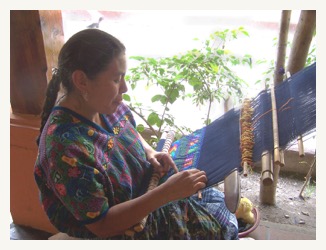 The Coban area in Alta Verapaz is known as the best site to see all kinds of Orchids and other similar plants. The spectacular, national orchid show is held here each December. Otherwise, you may want to visit between October and February, when many flowers are in bloom. We can prepare a nice tour with an expert to take you around to enjoy gardens, farms, and view some of the country's 1,000 species in the wild.
The Coban area in Alta Verapaz is known as the best site to see all kinds of Orchids and other similar plants. The spectacular, national orchid show is held here each December. Otherwise, you may want to visit between October and February, when many flowers are in bloom. We can prepare a nice tour with an expert to take you around to enjoy gardens, farms, and view some of the country's 1,000 species in the wild.
For lovers of Coffee, we can design tours that not only include traditional sites, visiting the plantations and the mills, we can include lodging on farms. Cupping sessions allow you to really learn about coffee. You can have a wonderful vacation and at the same time to learn about the coffee process from start (with plantations and people involved in the production) to the end - and of course taste some of the world's best coffees. Each farm will explain their own process, some will handle the process until the wet mill and some will only so the harvest, and others will go over the entire process of growing, picking and selling the bean. Personally speaking, I can attest that my stay at the Finca Las Nubles (coffee plantation and reserve) with its 1840s main house, was one of my most enjoyable and memorable experiences in all my travels to Guatemala starting in the 1970s.
The Guatemalan National Coffee Association (Anacafe), has divided Guatemala into 8 regions of coffee depending on the area where they harvest the coffee bean:
Antigua Coffee: Finca EL Pilar, Finca Filadelfia
Traditional Atitlan: Volcano San Pedro, San Juan La Laguna, Finca Los Andes, Finca Los Tarrales
Rainforest Coban
Fraijanes Plateau: El Rincon Farm
Highland Huehuetenango
New Orient
Volcanic San Marcos: Santa Julia Farm, Finca Las Nubes
Acatenango Valley


GUATEMALA BIRDING
 Guatemala has some of the most varied avian life of any county of similar size. In this compact country you can view tropical, cloud forest, coastal and mountain species all during one visit. Needless to say this is fine for those who wish to register the maximum number of sightings, though by the end of your stay you may hardly remember what you saw at the start!
Guatemala has some of the most varied avian life of any county of similar size. In this compact country you can view tropical, cloud forest, coastal and mountain species all during one visit. Needless to say this is fine for those who wish to register the maximum number of sightings, though by the end of your stay you may hardly remember what you saw at the start!
We prefer to organize trips beginning with the birds of the Western Highlands, passing through Coastal Forest, Dry and Thorny Forests, Cloud Forests and finishing with Humid and Very Humid Forests - together offering the opportunity to spot more than 750 species. In addition to diverse endemic species, Guatemala is an ecological corridor, where many species from North and South America have their meeting points. Although other larger countries may have more species, Guatemala probably has the highest variety in the smallest area, all with relatively easy access.
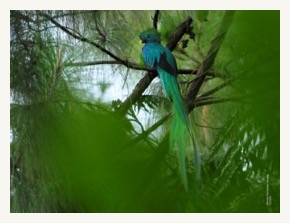 Most birders and ornithologists come here to experience the world's most beautiful birds, the Resplendent Quetzal Pharomachrus m. mocinno, the festive Scarlet Macaw Ara macao, Azure-Rumped Tanager Tangara Cabanisi, the Pink-Headed Warbler Erigaticus Versicolor and the Horned Guan Oreophasis derbianus among other special and endemic species.
Most birders and ornithologists come here to experience the world's most beautiful birds, the Resplendent Quetzal Pharomachrus m. mocinno, the festive Scarlet Macaw Ara macao, Azure-Rumped Tanager Tangara Cabanisi, the Pink-Headed Warbler Erigaticus Versicolor and the Horned Guan Oreophasis derbianus among other special and endemic species.
There are more quetzals in Guatemala than in any other country, and hence more chances of viewing this extremely elusive bird. We work with a group of Guatemalan environmentalists and local Q’eqchi indians in the Quetzal and Cloud Forest Rescue Project, so you can be sure that your visit will benefit the local communities and help to preserve the quetzal and its environment.
The search for the scarlet macaw takes us to the jungle lowlands, where the species is in danger of extinction by poachers. A scarlet macaw can fetch as much as US$ 2,500 in the illegal pet trade. Our group is working with the local communities to protect the macaw, so they can earn a steady income from visitors for the foreseeable future, rather than profiting in the short term with its resultant extinction in Mesoamerica. Both the Quetzal and the scarlet macaw were sacred birds in the eyes of the Maya, with your visit you will be helping both of these exceptional genus survive, as well as benefiting the local communities who are learning to profit from their protection.
Following are some of the areas which may interest you:
PACIFIC SLOPE
• Mangrove reserves and Coastal Sand Beaches only accessible by water:
• Monterrico Nature reserve, Manchon Guamuchal and Puerto Quetzal San Jose,
• Tropical Decidous Forest tall with fast flowing rivers:
• Patrocinio, Tarrales, Los Andes, Las Nubes Farms and Natural Reserves Takalik Abaj Archaeological National Park)
• Tropical Decidous Forest short:
• El Astillero lo de China
• Mountain Evergreen Forest The most extensive cloud forest reserves in Central America with high mountain tundra and lakes,:
• Filadelfia Farm, Los Tarrales, Los Andes, Las Nubes Natural Reserves, Fuentes Georginas, San Pedro Volcano, Quetzal Biotope, The Ranchitos of the Quetzal.
• Pine-Oak Forest & Pine Forest:
• Cayala Ecological Park,Muxbal Scout Camp, Finca San Santiago,Cerro Alux Stream Reserve, Tecpan Molino Helvetia, Corazón del Bosque, San Juan La Laguna, Rio Escondido, Ram-Tzul Reserve.
CARIBBEAN SLOPE
• Tropical Decidous Forest Tall with heavily forested Caribbean Coast
• Cerro San Gil (considered the best bird spotting location on the entire Caribbean Coastline), Quirigua, Hunal-ye Natural reserve, Peten Area Observe birds and at the same time discover Maya remains. This area is in many places remarkably similar to the Amazon Rain Forest. Tikal, Yaxha, Aguateca, Ceibal, Cerro Cahuí.
• Mangroves and Coastal Sand Beaches and Pelagic Waters
• Rio Dulce, Chocon Machacas Reserve, Rio Sarstun, Playa Blanca, Livingston
Our bird-watching trips are always guided by local bilingual English/Spanish-speaking ornithologists/biologists with profound knowledge of local species.

Below is an outline of a sample 10-day Birding tour with a varied itinerary. More specialized birding tours can be designed based on species and environments of interest.
GUATEMALA BIRD-WATCHING TOUR
DAY 1 (Thursday or Monday)
Arrive in Guatemala, transfer to Antigua. Welcome dinner and overnight.
DAY 2 (Friday or Tuesday)
Half-day walking tour of the colonial city.
Afternoon and evening visit to an organic coffee plantation and wooded hillsides for birdwatching (Coffee plantations in Guatemala are shaded, hence make excellent birdwatching areas). Semi-humid highland sub-tropical forest - wet season May to October.
DAY 3 (Saturday or Wednesday)
For those who wish, birding at dawn in the surrounding fields and woods. After breakfast, transfer to the highlands and Lake Atitlán. Arrival at lunchtime. In the afternoon, a two hour hike in the countryside to the shores of the lake, and the indian village of Santa Catarina Palopó, returning by launch. Evening transfer to the nature reserve to experience the avian activity at dusk. Semi-humid highland sub-tropical forest.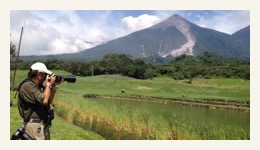
DAY 4 (Sunday or Thursday)
(Must be a Sunday or Thursday) Transfer to the indian market at Chichicastenango. In the afternoon transfer to Guatemala City. Evening birdwatching in the heavily wooded ravines that surround Guatemala City. Semi-humid highland sub-tropical forest.
DAY 5 (Monday or Friday)
 Early transfer to Guatemala’s largest inland body of water, Lake Izabal. Travel to the wetland wildlife reserve of Bocas de Polochic. Rustic overnight accommodations. Evening birdwatching in one of the most prolific birding areas of Central America. Tropical Humid Rain Forest.
Early transfer to Guatemala’s largest inland body of water, Lake Izabal. Travel to the wetland wildlife reserve of Bocas de Polochic. Rustic overnight accommodations. Evening birdwatching in one of the most prolific birding areas of Central America. Tropical Humid Rain Forest.
DAY 6 (Tuesday or Saturday)
Morning of birdwatching, then return towards the highlands to Central America's largest expanse of cloud forest, Sierra de las Minas. Rustic accommodations. Chance to view the quetzal. Cloud Forest.
DAY 7 (Wednesday or Sunday)
Continue hiking and birdwatching. Afternoon transfer to Guatemala City. Cloud Forest.
DAY 8 (Thursday or Monday)
Early morning flight to Flores. Reception and transfer to Petexbatún Lake, visiting the Maya ruins at Ceibal on the way. Overnight in the Petexbatún Jungle Lodge beside the lake. Prolific birding in this protected area. Sub-Tropical Humid Rain Forest.
DAY 9 (Friday or Tuesday)
Early morning visit to the ruins of Aguateca and birdwatching along the way, followed by transfer to Flores. Evening visit to the nearby Cerro Cahuí Reserve. Sub-Tropical Humid Rain Forest.
DAY 10 (Saturday or Wednesday)
Early morning birding in the protected area behind the hotel. Then, after breakfast, visit the Maya archaeological site at Tikal National Park, returning to Guatemala City in the afternoon. Connect to flights out, or overnight.
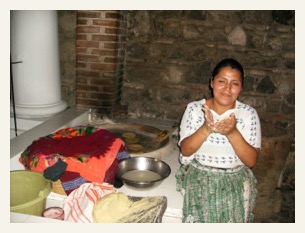
Guatemala shares the strongest pre-Columbian traditions of any country in the continent, together with Peru and Bolivia. Nevertheless Guatemala’s greatest advantage is that its principal indigenous traditions are mostly located within an area the size of Belgium. There are 23 recognized languages spoken in The Maya World, and the traditions of culture, religion, costume, and festivals are probably the most diverse of any single area of the world. Compare Peru and Bolivia where only two languages and one culture have survived.
We can offer visits to the major living cultures of Guatemala, from popular market places like Chichicastenango, to the less visited communities in the remote Cuchumatan Mountains. We take great care to use local guides wherever possible and take our visitors to festivities and markets less visited by tourists. The following are the principal market days of indigenous communities through the highlands. Tour itineraries to this region should be built around these events. Bold letters indicate an outstanding market.
Monday: Antigua; Chimaltenango; Zuñil;
Tuesday: Acatenango, Comalapa, Totonicapán
Wednesday: Huehuetenango
Thursday: ntigua; Chichicastenango; Panajachel; San Pedro Sacatepequez;
Friday: Chimaltenango; San Francisco el Alto; Santiago Atitlán; Sololá
Saturday: Antigua; Todos Santos Cuchumatan; Santa Cruz de Quiché; Sumpango; Totonicapán
Sunday: Chichicastenango; Huehuetenango; Nahualá; and many, many more.
Sunday is THE market day.

MAYA CULTURE THROUGH TIME
The Maya culture includes a large number of communities and linguistic groups located today in Guatemala, Honduras, Belize and Mexico. The development of this culture as a society spans 3,000 years, and archaeologists have divided it into three main periods: Preclassic Period which begins in 2000 BC and lasts up to 250 AD, a date chosen by archaeologists because of the appearance of monuments dated with the Long Count; followed by the Classic Period, ending around the year 950 AD with the disappearance of these monuments. There is then an important development in the peninsula of Yucatán and the Guatemalan highlands, outlining the Postclassic period which ends in 1524 with the founding of the first Spanish city in Guatemala. However, in Petén, the Maya Itza’ government stood firm until 1697, while in Yucatán, Maya people maintained a fierce resistance until the early twentieth century. Among this group of peoples, the one that inhabited the lowlands of Petén and southern Yucatán, a Cholan-speaking group, bequeathed an impressive civilization with immense architectural constructions, as the cities of the Mirador basin, extensive and massive roads (the largest 100 km long), drainage and water harvesting systems, and defensive systems, among others. This group, popularly called the classic Maya, although in decline towards the 10th century, left its mark in mathematics, writing and astronomical observations and undoubtedly influenced groups that simoultaneously and subsequently flourished.
Among this group of peoples, the one that inhabited the lowlands of Petén and southern Yucatán, a Cholan-speaking group, bequeathed an impressive civilization with immense architectural constructions, as the cities of the Mirador basin, extensive and massive roads (the largest 100 km long), drainage and water harvesting systems, and defensive systems, among others. This group, popularly called the classic Maya, although in decline towards the 10th century, left its mark in mathematics, writing and astronomical observations and undoubtedly influenced groups that simoultaneously and subsequently flourished.

Preclassic Period (2.000 BC - 250 AD.):
There is evidence of the first settlements in Petén around 2500 B.C., based on corn fossil records. Meanwhile, in the Southern Coast, the first evidence of ceramic appears between 1550 and 1250 BC. With the development of the Olmec civilization, around 1200 BC, an intense trade network begins, giving way to an increase in population and activity in Tak'alik Ab'aj as of 900 BC, with it becoming a true “center of commerce”.
Between 900 to 600 BC other areas develop, like the sites of the so called Mirador basin and Tikal. During the period from 600 to 400 BC trade networks are better defined and remote contacts are evident, to the south with the Coast and to the north with Yucatán. From 400 BC, remarkable growth is achieved with the appearance of the government institution around the Ahaw and it’s a time of increased building throughout Petén. Tak'alik Ab'aj seems to move towards a more clearly defined Maya affiliation.
However, in a period between 50 to 250 AD, there is a significant change in several areas. The sites in the Mirador Basin suffer a population decline and beligerant encounters are evident in central Petén. As a result, new and vibrant places begin to appear, like Naachtun, and Tikal’s first dynasty is established. A K’iche’ population reaches the Highlands, and apparently settles in Kaminal Juyu’. Tak'alik Ab'aj’s trade route is interrupted as well as the construction of monuments in that city.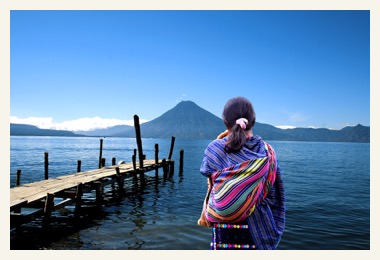
Classic Period (250 - 900 AD):
In 376 AD a contingent led by Siyaj K'ak' and supported by a Teotihuacan faction raids Peten’s lowlands and a change in Tikal’s dynasty occurs. Tikal then moves to control Peten’s trade routes, through the control of river basins.
In 426 AD the Quirigua dynasty is established under the protection of Copan. In 672 AD, Tikal strikes Dos Pilas and attacks among Tikal’s allies and those associated with Calakmul’s Kan dynasty increase, culminating with the victory of Tikal. However, new fronts open and new dynasties engage in beligerant encounters in Petén. Meanwhile, in the Highlands, the separation between the major K'iche' groups is emphasized. El Baul and Bilbao arise as dominant centers in the Cotzumalguapa region.
Post Classic Period (950 - 1967 AD):
Towards 950 AD, Chichen Itza becomes the dominant center in the region. By then, activity in central Petén was in decline, after their last monuments are built in 889 AD and the burning of Caracol in 895 AD. Chichen Itza falls around 1100 AD and Mayapan takes its place after its founding in 1221 AD. At that time, coastal settlements flourish and maritime trade peaks. In the Highlands, the K'iche', Kaqchikel and Tzutujil groups spread through the center of Guatemala until the time of Spanish contact.
The Spanish invasion marked a new period of resistance, both militarily and socially, and ushered a history that still remains. Since the nineties, a revitalizing movement of Maya culture, supported by linguistics, anthropology and archeology, has given substance to their existence and survival as a present and contributing people to the country's current history. The numerous publications that originate from within Maya groups cover not only purely historical issues but also expand its participation in the arts and in politics.

MAYAN CALENDARS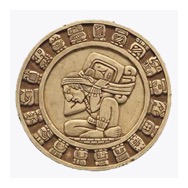
Vestiges from prehispanic times show that time mesuring has always been central to the Cosmology of the Maya people. Time is seen as an animated body and is conceived in a cyclic manner, which allows the notion that fate is predictable. Therefore, ajq´ijab´ or “Maya spiritual guides" can make guesses related to people’s lives and great calendrical cycles.
Time mesurement was so important to the prehispanic Maya culture that they developed different calendars and based a lot of dates in several of them so that the calendars were synchronized.
Among the most important Maya calendars are:
• The Tzolkin Calendar, which consists of a 260-day cycle.
• The Solar Calendar or Haab consisting of the solar year of 365 days.
• The so-called Calendar Wheel, which is a combination of Tzolkin and Haab, resulting in 52 Haab years and 73 Tzolkin cycles.
• The Long Count Calendar is the count of days from an initial date or "year zero", measured according to five periods (K´in, Winal, Tun, K´atun and Bak´tun ) based on a vigesimal system.
The Tzolkin and Haab were used by all Mesoamerican peoples and are the only ones that were still used after the Spanish conquest.
In ancient times, only spiritual leaders and certain members of the elite had access to the knowledge of how the different time measurement systems worked. This enabled them not only to predict celestial phenomena, but to acquire some degree of political power, especially through the calendar known as the Long Count. However, it is possible that the sacred cycle of 260 days of the Solar Calendar was used by the entire population, as it was associated with agricultural cycles and children were named according to the day of the calendar they were born in.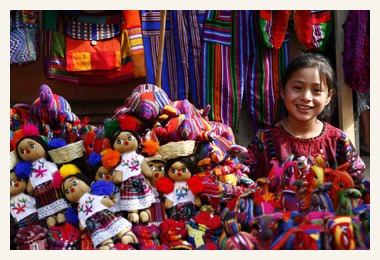
Epigraphic investigations have uncovered several calendars that were only developed by the Maya, such as the measurement of the lunations and the cycles of Venus, Mars and other planets. In the spiritual realm, there was also a 9-day cycle, associated with the Lords of the Underworld, as well as a cycle of 819 days.

MAYA COSMOLOGY
Cosmology refers to the ideas and symbols through which we see and interpret the world around us. Maya people have shared the same cosmology since ancient times, but have adopted elements of other cultural traditions throughout their history.
Although we do not know all the details of prehispanic Maya Cosmology much knowledge has been recovered through symbols reflected in ceramic vessels, codices, murals, sculptures and other artifacts, as well as the interpretation of buildings such as pyramidal temples and palaces. Despite suffering the Spanish conquest and colonization, the Maya have preserved key elements of their cosmology so that today, it is practiced through various spiritual manifestations.
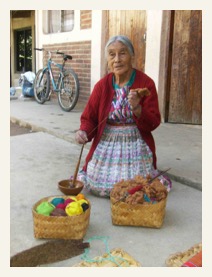
The cosmos, according to the Maya, is composed of three superposed parts: the heavens, the earth and the underworld or Xibalbá. Each is subdivided into several levels, 13 levels associated with the world above and 9 levels with the world below.
The earth is bound by four corners marked by the four cardinal points and by four colors, the most important being the East, red, where the sun rises every day. The West, black, is where the Sun sets and is regarded as the entrance to Xibalbá. The North, white, is associated with the ancestors, while the South is identified with the color yellow.
The center of the cosmos is associated with green and blue, the colors of water, and was represented by the Kapok tree or “Ceiba” (Ceiba pentandra). Its branches extend to the Zenith, the highest point of the Overworld, while its roots descend to the Nadir, the ninth and deepest level of Xibalbá.
In general, Maya Cosmology does not define a division between the secular world and the supernatural, since elements of both exist in everyday life.
Xibalbá, located under our world is a place inhabited by beings and gods who control natural phenomena, who provide life but in turn are treacherous and envious. Xibalbá is accessed through caves and bodies of water such as lakes and cenotes.
Plants, animals, humans, aluxes, nahuales and other supernatural beings inhabit the Earth. Every person has a spiritual counterpart that in Guatemala is known as a Nahual. The Nahual is the link between the person and nature and can be an animal, plant or other entity, depending on the place. The prehispanic Maya called it “way” and was represented in ceramic vessels and inscriptions.
Nature is central to the Cosmology of the Maya people, given the close relationship between the Sacred Earth (Loq´alaj Ulew) and humans (Winaq). There is no distinction between the two, as all beings are part of a single living system called Qanan Ulew (Our Mother Earth). Everything, therefore, is alive, nothing is inert: a tree, a rock, the sky and wind, all have the same breath of life that makes it creditor of the deepest respect. Any natural phenomenon that causes disasters, for example, is the result of our negligence towards Mother Earth.
Planting is a very special event in which Mother Earth becomes pregnant by the work of man and thus provides the sacred corn. In prehispanic art, the most common shapes come from nature: jaguars, monkeys, birds and mythological reptiles, trees and water nymphs represent landscapes and deities.

The historic, natural, and cultural heritage of Guatemala may be discovered throughout the whole territory. The magic and mystery of the Mayan world subsist in the millenary cities such as Tikal, Yaxhá, Aguateca, and Quiriguá among others. The faces, the colorful regional costumes, and the kindness of the people from the highlands are like an echo of an impressive colonial past that may be heard in the churches and convents of Antigua Guatemala. Such resonance is also the contact with an exuberant nature which is the origin and destination of a unique biodiversity in the world.
Guatemala, modern and colonial
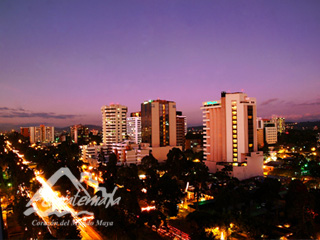 Guatemala City is the most flourishing city in Central America with its modern buildings and business centers that contrast with La Antigua Guatemala, colonial and romantic city, with a combination of ancient buildings and rooted customs and traditions.
Guatemala City is the most modern and cosmopolitan city of the Central American region. It is the ideal place to organize conferences and conventions, play golf, make medical check-ups, and visit shopping centers among other activities. Visiting the Historic Center of more than 200 years of existence is mandatory. Its cathedral, emblematic buildings, churches, and museums are a reflection of the historic evolution of the country.
Entertainment and distraction sites are also present in Guatemala; for example, Zona Viva where its exclusive hotels, restaurants and discotheques enhance the city.
Very close to the capital city is located the picturesque and enchanting City of Antigua Guatemala, main icon of the Hispanic colonial heritage. It is localized in the Panchoy Valley and is surrounded by three volcanoes, mountains, and coffee plantations. It was declared Cultural Heritage of Humanity Site by UNESCO in 1979. Its cobblestone streets and ancestral buildings conform a scenery where splendorous cultural and religious traditions emerge. Romanticism floats in every corner of the city; therefore, it is the perfect place to celebrate weddings and special events. Visitors may choose among beautiful, colonial hotels, boutique hotels, and charming hotels with first class facilities for conferences and business meetings in an inspirational environment.
Antigua Guatemala is the ideal destination for religious tourism during Holy Week, especially for its catholic awareness, faith, and the beauty of its processions and colorful rugs. Explore this region
Guatemala City is the most flourishing city in Central America with its modern buildings and business centers that contrast with La Antigua Guatemala, colonial and romantic city, with a combination of ancient buildings and rooted customs and traditions.
Guatemala City is the most modern and cosmopolitan city of the Central American region. It is the ideal place to organize conferences and conventions, play golf, make medical check-ups, and visit shopping centers among other activities. Visiting the Historic Center of more than 200 years of existence is mandatory. Its cathedral, emblematic buildings, churches, and museums are a reflection of the historic evolution of the country.
Entertainment and distraction sites are also present in Guatemala; for example, Zona Viva where its exclusive hotels, restaurants and discotheques enhance the city.
Very close to the capital city is located the picturesque and enchanting City of Antigua Guatemala, main icon of the Hispanic colonial heritage. It is localized in the Panchoy Valley and is surrounded by three volcanoes, mountains, and coffee plantations. It was declared Cultural Heritage of Humanity Site by UNESCO in 1979. Its cobblestone streets and ancestral buildings conform a scenery where splendorous cultural and religious traditions emerge. Romanticism floats in every corner of the city; therefore, it is the perfect place to celebrate weddings and special events. Visitors may choose among beautiful, colonial hotels, boutique hotels, and charming hotels with first class facilities for conferences and business meetings in an inspirational environment.
Antigua Guatemala is the ideal destination for religious tourism during Holy Week, especially for its catholic awareness, faith, and the beauty of its processions and colorful rugs. Explore this region
Highlands, living Mayan culture
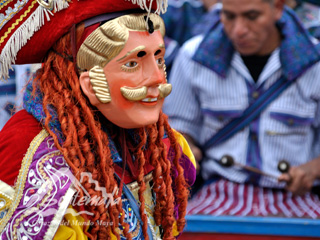 It is a region that offers the perfect combination of natural beauties, spectacular mountain landscapes, and traditions of a living Mayan culture.
The most rooted indigenous culture can be found in the highlands. The pine forests and active volcanoes allow visitors to practice hiking, canopying and, ecotourism. The Western region provides a folkloric display that unifies the pre-Columbian cosmogony and the customs of the conquerors. Such region is a perfect combination of the natural beauties, like Lago de Atitlán and the traditions, like the market of Chichicastenango, famous for its colorfulness and extension.
A representation of the millenary traditions and the experiences of the Mayans are reflected in every ambit of the historical, ancestral diversity of the region where the sacred book of Mayans, The Popol Vuh, was born. This region also offers numerous options of personal encounters with its communities. It is the ideal space to enjoy the cultural diversity, to learn languages, and to live the traditions. This region promises visitors a unique experience. Explore this region
It is a region that offers the perfect combination of natural beauties, spectacular mountain landscapes, and traditions of a living Mayan culture.
The most rooted indigenous culture can be found in the highlands. The pine forests and active volcanoes allow visitors to practice hiking, canopying and, ecotourism. The Western region provides a folkloric display that unifies the pre-Columbian cosmogony and the customs of the conquerors. Such region is a perfect combination of the natural beauties, like Lago de Atitlán and the traditions, like the market of Chichicastenango, famous for its colorfulness and extension.
A representation of the millenary traditions and the experiences of the Mayans are reflected in every ambit of the historical, ancestral diversity of the region where the sacred book of Mayans, The Popol Vuh, was born. This region also offers numerous options of personal encounters with its communities. It is the ideal space to enjoy the cultural diversity, to learn languages, and to live the traditions. This region promises visitors a unique experience. Explore this region
Petén, adventure in the Mayan world
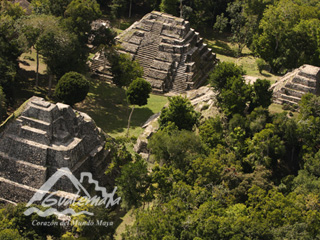 Petén is the biggest department of Guatemala. Its territorial extension is of 35,854 squared kilometers. The municipality is the island of the city of Flores and it is also the starting point for different tourist attractions.
This department holds a unique historic value for its archeological richness, its fauna, and its biosphere reserve. Its numerous archeological sites make this region the most important one of the Mayan world.
Also, all the legends about one of the most amazing cultures of the world are born here. Its fascinating archeological sites are surrounded by jungle. One of such sites is Tikal, which was declared Cultural Heritage of Humanity Site by UNESCO in 1979. Besides, there may be found Yaxhá, Ceibal, Aguateca, San Bartolo and El Mirador where the biggest pyramid, for the size of its base, of the Mayan world is found. Another interesting site is Uaxactún that had an astrologic observatory in one of the most important buildings of the area. These places were the scenery of the Mayan culture development.
Flores City has an international airport called Mundo Maya, a bus terminal, and independent companies of collective transportation, express transportation, taxis, and motorcycle taxis.
In the island of Flores it is located the lake Petén Itzá which is the second, largest lake of Guatemala. The natural park, the zoo of Petencito, and the Mirador of King Kanek are very close by.
To visit these places and the shores of the lake, there is a service of motor boats well-conditioned for tourists.
Close to Flores there is the city of Santa Elena, where the Actún Kan Caves and most of the commerce centers are located.
The region of Petén is like an archeological Mayan museum for its numerous sites from the pre-classic, classic, and post-classic periods of a great civilization found around the jungle.
Additionally, this region offers other attractions for tourists such as recreational centers in rivers, beaches, canopying, aquatic parks, natural reserves, customs, and traditions.
For its natural reserves, Petén is known as the lung of the region. It shelters hundreds of species of animals and vegetables. Such richness and forest diversity is perfect for adventure tourism, birdwatching and ecotourism. Explore this region
Petén is the biggest department of Guatemala. Its territorial extension is of 35,854 squared kilometers. The municipality is the island of the city of Flores and it is also the starting point for different tourist attractions.
This department holds a unique historic value for its archeological richness, its fauna, and its biosphere reserve. Its numerous archeological sites make this region the most important one of the Mayan world.
Also, all the legends about one of the most amazing cultures of the world are born here. Its fascinating archeological sites are surrounded by jungle. One of such sites is Tikal, which was declared Cultural Heritage of Humanity Site by UNESCO in 1979. Besides, there may be found Yaxhá, Ceibal, Aguateca, San Bartolo and El Mirador where the biggest pyramid, for the size of its base, of the Mayan world is found. Another interesting site is Uaxactún that had an astrologic observatory in one of the most important buildings of the area. These places were the scenery of the Mayan culture development.
Flores City has an international airport called Mundo Maya, a bus terminal, and independent companies of collective transportation, express transportation, taxis, and motorcycle taxis.
In the island of Flores it is located the lake Petén Itzá which is the second, largest lake of Guatemala. The natural park, the zoo of Petencito, and the Mirador of King Kanek are very close by.
To visit these places and the shores of the lake, there is a service of motor boats well-conditioned for tourists.
Close to Flores there is the city of Santa Elena, where the Actún Kan Caves and most of the commerce centers are located.
The region of Petén is like an archeological Mayan museum for its numerous sites from the pre-classic, classic, and post-classic periods of a great civilization found around the jungle.
Additionally, this region offers other attractions for tourists such as recreational centers in rivers, beaches, canopying, aquatic parks, natural reserves, customs, and traditions.
For its natural reserves, Petén is known as the lung of the region. It shelters hundreds of species of animals and vegetables. Such richness and forest diversity is perfect for adventure tourism, birdwatching and ecotourism. Explore this region
Izabal, a green Caribbean
 With an original charm, rich ecosystems, and the happiness of the Garifuna culture, Izabal offers an encounter with a Caribbean of exuberant, natural beauty.
The diversity representation is greatly reflected in the green Caribbean for its rich ecosystems that are habitat for different species. Among its natural reserves are: Río Dulce, Bocas del Polochic, Punta de Manabique, and Biotopo Chocón Machacas. This region also owns Quiriguá, an archeological site declared Heritage of Humanity Site by UNESCO, where the famous “Estela E”, the biggest Mayan stela, of 10.5 meters high is found. Besides, the experience of visiting Castillo de San Felipe, built in the colonial era to avoid English pirates attacks, is offered to visitors.
The stunning Lago de Izabal, the largest in the country, the contrast among jungle, rivers and sea, and the mixture of the Garifuna and Mayan cultures make this a magic and fantastic paradise. Explore this region
With an original charm, rich ecosystems, and the happiness of the Garifuna culture, Izabal offers an encounter with a Caribbean of exuberant, natural beauty.
The diversity representation is greatly reflected in the green Caribbean for its rich ecosystems that are habitat for different species. Among its natural reserves are: Río Dulce, Bocas del Polochic, Punta de Manabique, and Biotopo Chocón Machacas. This region also owns Quiriguá, an archeological site declared Heritage of Humanity Site by UNESCO, where the famous “Estela E”, the biggest Mayan stela, of 10.5 meters high is found. Besides, the experience of visiting Castillo de San Felipe, built in the colonial era to avoid English pirates attacks, is offered to visitors.
The stunning Lago de Izabal, the largest in the country, the contrast among jungle, rivers and sea, and the mixture of the Garifuna and Mayan cultures make this a magic and fantastic paradise. Explore this region
The Verapaces, natural paradise
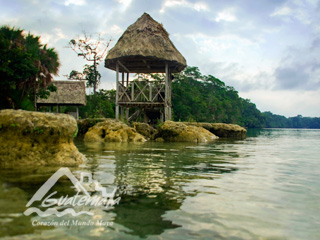 This region is characterized for its caves, its leafy forests, singular waterfalls, natural pools, and a variety of flora and fauna.
Its territory is ideal for those who like extreme sports, outdoor recreation, and communitarian tourism. From the hiking of the humid forest in the mountains; the visit to the Biotopo del Quetzal routes, in which one may participate in a photographic safari to capture the national bird, the Quetzal; the excursion to each of its extensive and long caves, among them Lanquín or Candelaria; to the practice of extreme sports like rafting in Cahabón River and Semuc Champey, one of the main attractions for its waterfalls of 40 feet high and a natural limestone bridge of great ecologic richness since more than 100 bird species have been identified. All these and more make this region one of the favorite destinations for adventure and ecotourism. It would be a unique experience inside the leafy forests with a varied fauna and flora that includes more than 800 orchid species. Explore this region
This region is characterized for its caves, its leafy forests, singular waterfalls, natural pools, and a variety of flora and fauna.
Its territory is ideal for those who like extreme sports, outdoor recreation, and communitarian tourism. From the hiking of the humid forest in the mountains; the visit to the Biotopo del Quetzal routes, in which one may participate in a photographic safari to capture the national bird, the Quetzal; the excursion to each of its extensive and long caves, among them Lanquín or Candelaria; to the practice of extreme sports like rafting in Cahabón River and Semuc Champey, one of the main attractions for its waterfalls of 40 feet high and a natural limestone bridge of great ecologic richness since more than 100 bird species have been identified. All these and more make this region one of the favorite destinations for adventure and ecotourism. It would be a unique experience inside the leafy forests with a varied fauna and flora that includes more than 800 orchid species. Explore this region
The Pacific Coast, exotic and diverse
 Extensive coasts of volcanic sand will welcome visitors to a beautiful place of natural reserves.
Its splendid 300- kilometer- long beaches allow visitors to practice surfing and sport fishing, especially sailfish, sport that has been recognized as number one in the region and second in the world. The habitats of this region are great for the development of turtle hatcheries and mangroves, and facilitate the subsistence of the ecosystems for diverse species.
In this region it is also possible to climb volcanoes, to practice birdwatching, to visit important archeological sites like Takalik Abaj in Retalhuleu and El Baúl in Escuintla. In Retalhuleu the whole family may also enjoy important recreational and theme parks that allow the experiencing of harmony and entertainment. Explore this region
Extensive coasts of volcanic sand will welcome visitors to a beautiful place of natural reserves.
Its splendid 300- kilometer- long beaches allow visitors to practice surfing and sport fishing, especially sailfish, sport that has been recognized as number one in the region and second in the world. The habitats of this region are great for the development of turtle hatcheries and mangroves, and facilitate the subsistence of the ecosystems for diverse species.
In this region it is also possible to climb volcanoes, to practice birdwatching, to visit important archeological sites like Takalik Abaj in Retalhuleu and El Baúl in Escuintla. In Retalhuleu the whole family may also enjoy important recreational and theme parks that allow the experiencing of harmony and entertainment. Explore this region
The East, mystical and natural
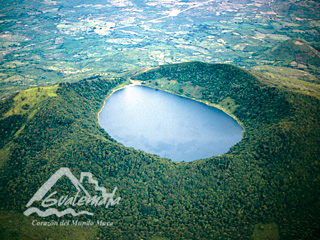 This is one of the religious centers of most importance for its spiritual awareness and mysticism.
Sierra de las Minas is home of more than 885 species of mammals, reptiles, and birds being 20 of them endemic bird species that live in the cloud forest reserve, the most extensive of Central America.
Esquipulas is an important destination for religious meetings and its icon is the well-recognized Basilica Menor del Cristo Negro.
This region also offers trips around natural treasures like the Ipala Volcano and Lagoon and the Güija Lagoon. Its visitors are delighted with the ecologic excursions and the enjoyment of the parks and history of the Paleontology and Archeology Museum Ing. Roberto Woofolk Saravia in Estanzuela. Such museum keeps skeletons of mastodons and whales that are 50 thousand –years-old. Besides, this region possesses colonial churches and artistic treasures worthy of visiting. Explore this region
This is one of the religious centers of most importance for its spiritual awareness and mysticism.
Sierra de las Minas is home of more than 885 species of mammals, reptiles, and birds being 20 of them endemic bird species that live in the cloud forest reserve, the most extensive of Central America.
Esquipulas is an important destination for religious meetings and its icon is the well-recognized Basilica Menor del Cristo Negro.
This region also offers trips around natural treasures like the Ipala Volcano and Lagoon and the Güija Lagoon. Its visitors are delighted with the ecologic excursions and the enjoyment of the parks and history of the Paleontology and Archeology Museum Ing. Roberto Woofolk Saravia in Estanzuela. Such museum keeps skeletons of mastodons and whales that are 50 thousand –years-old. Besides, this region possesses colonial churches and artistic treasures worthy of visiting. Explore this region
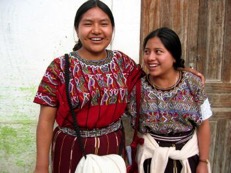
Guatemala Travel and sights
Guatemala Travel scenes slideshow
Community tourism in Guatemala
Guatemala Travelogue
Tikal National Park
Mundo Maya
The Mayan Calendar
Mayan Hieroglyphics

Return to the top of this webpage :)
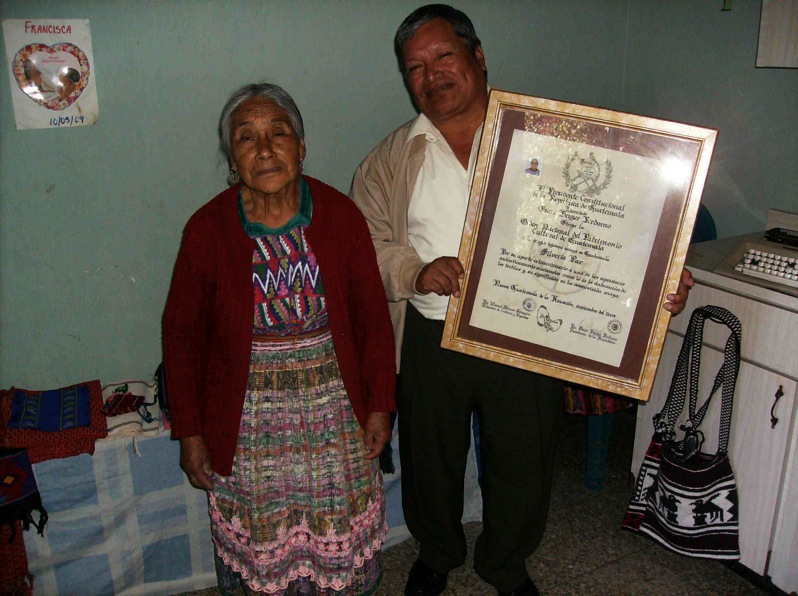
El Mundo Maya de Guatemala - The world of the Maya in Guatemala
Guatemala is a national full of wonders - a fusion of the past and present. A great travel destination and value - it offers unique geography, a rich history, scenic environments with high biodiversity, delicious cuisine, quality accommodations, spring-like climate, and friendly peoples.
And as if this were not enough, Guatemala's ideal climate has gained it the name of "The Land of Eternal Spring." With it's verdant and diverse ecosystems "Guatemala" is true to its name origin - which came from the Nahuatl word, Cuauhtēmallān, or "place of many trees" - itself a translation the word in Mayan K'iche' for "many trees."
Guatemala's traditions go back to pre-history, and its captivating legends are passed from generation to generation. Emerging from its mystical past, The Maya World today offers an excellent infrastructure of fine hotels, restaurants and transportation. With all this and much more, The Maya World is truly a dream destination. It’s without doubt that a visit will be exciting and unique, with incredible experiences to capture your imagination and create indelible memories.

Like many developing countries, Guatemala also has more than its share of poverty. Tourism is the nation's second largest origin of revenue. In 2011, 1.8 million tourists visited the country and the government hopes to increase this number to 2.8 million per year by 2022. Your travel there will have a positive impact on the economy and will help people's lives.
Explorations is happy to help couples and groups with custom itineraries. Below is a great introductory tour of 8 days, called Discover Guatemala that we can operate any week. If you have longer or specific interests, we can create itineraries to suit - see below for options and ideas.
DISCOVER GUATEMALA
8 Days itinerary, starting and ending in Guatemala City
Includes: ANTIGUA, CHICHICASTENAGO, LAKE ATITLAN, and TIKAL
DAY 1 (Thursday) Antigua
Upon arrival at La Aurora International Airport in Guatemala City, reception, a brief sightseeing tour of the capital city, you then are transfered to the Hotel Casa Santo Domingo, or similar, for two overnights in ANTIGUA. Guatemala's ancient capital city is rich in history with colonial churches and buildings dating back to the 1500's and is designated by UNESCO as a World Heritage Site.
DAY 2 (Friday) Antigua

Antigua is a true colonial gem, and this morning you will visit the principal sights on foot with a local historian. The walking tour will include centuries-old churches, convents and plazas. Many buildings have been beautifully restored, while others remain as they were after the devastating earthquakes of 1773 and 1976. After lunch, you experience an encounter with the some of the world’s best coffee at the Filadelfia Coffee Plantation. Guatemala is one of the few countries still producing coffee under shade trees, which provides a natural habitat for innumerable birds, small mammals and insects, as well as lengthening the ripening period, making it the finest coffee in the world. The farm is located in a beautiful valley close to the village of San Felipe and this fascinating guided tour explains all the aspects of coffee production, from planting, picking, drying and roasting, to selling on the world’s coffee markets. A morning city tour of the colonial architecture will provide a background for Antigua's long and fascinating history. The late afternoon and evening are free for personal exploration, relaxation, shopping, and/or museums. Stroll around the main plaza and cobblestone streets, visit the markets and various interesting shops, all while enjoying the views of the neighboring volcanoes and splendid historic architecture. (B)

DAY 3 (Saturday) Antigua to Chichicastenango
Morning at leisure in Antigua for personal explorations, relaxation, and shopping. In the afternoon, you are transfered high into green mountains to the Mayan town of CHICHICASTENAGO . There you can visit some of the simple colonial churches where preparations are being made ready for tomorrow’s market. Overnight is at the enchanting Hotel Santo Tomás, or similar. (B)

DAY 4 (Sunday) Chichicastenango to Lake Atitlán
This morning we suggest you arise very early in order to witness the unique indian religious ceremonies at the church of Santo Tomás. Later, you can enjoy the most famous open-air market in Central America, where you will find a great variety of handicrafts and antiques at incredibly low prices. The day is free to explore this colonial town’s architecture, churches, shops and witness age old traditions and rituals. In the afternoon, is a drive through the cloud forested mountains to PANAJACHEL, on the shores of picturesque Lake Atitlán, nestled amidst towering volcanoes. Your overnight is at the lovely Hotel Atitlan, or similar. (B)
DAY 5 (Monday) Lake Atitlán to Guatemala City
LAKE ATITLAN has been described as the most beautiful lake in the world. It is certainly unique and spectacular, surrounded by three impressive volcanoes. This morning, you travel with guide by launch across the calm waters to visit the fascinating lakeside, Tzutuhil Mayan village of Santiago Atitlán, to be surrounded by a beautiful scenery of natural and man-made colors. In the afternoon we transfer back to GUATEMALA CITY for overnight at the Hotel Westin Camino Real, or similar. (B)
Day 6 (Tuesday) Guatemala City to Tikal

Morning transfer to the airport to board your flight to FLORES. On arrival, you will be met at the airport and transferred to TIKAL NATIONAL PARK and the Tikal Jungle Lodge for two overnights. After lunch, you have a guided tour for an introduction to this important Mayan center. Your tour guide will take you back hundreds of years to the glory that was the seat of the Maya Culture. Visit Complex Q, Temple of the Great Jaguar, Temple of the Masks, Temple IV, and the Lost World Complex. You will walk the ancient Mayan roads, or sacbes, and tour the principal pyramid groups. Interpretations of the iconography on the existing stelae will help bring the ancient rulers back to life. You can climb the pyramids and try to envision an ancient city of possibly up to 100,000 people. Also, you may follow the monkey troops such as the boisterous howler monkeys from tree to tree in the overhead forest canopy and recognize the abundant birds and wildlife. At the Tikal Jungle Lodge, you will be staying within easy walking distant of "downtown" Tikal. Tikal is often considered the most spectacular of the ancient Mayan cities. Surrounded by a vast rainforest, the site of Tikal has been protected as a park for over 75 years and has been declared a "World Cultural and Natural Monument". The park offers some of the very best wildlife viewing in all of the Mundo Maya for howler monkeys, spider monkeys, foxes, kinkajous, macaws, toucans, parrots, a myriad of beautiful butterflies and much more! (B/L)
Day 7 (Wednesday) Tikal to Guatemala City
The first half of the day is free for personal explorations of the expansive Tikal ruins and the site museum (or you may arrange an optional guided tour). The site entrance fee is included. You will have an opportunity to stroll the jungle trails, climb the temples, and see monkeys, tropical birds and admire the Amazon-like rainforest flora. After lunch, you have a late afternoon transfer back to the Flores airport for your return to Guatemala City for overnight at the Hotel Crowne Plaza, or similar. (B) (Note: Lunch is not included to allow you more flexibility on timing.)
Day 8 (Thursday) Guatemala City

Day at leisure. Transfer to the airport for your flight out. (B)
SERVICES INCLUDED
All airport / hotel transfers / ground transportation as listed
All lodging, including hotel taxes as listed
Guided tours as described in trip brochures including entrance fees
Meals as listed (Breakfast / Lunch / Dinner)
Does NOT include international or roundtrip flights from Guatemala City to Flores
COSTS
Estimate $1,480 to $1,58o per person in double occupancy. We will provide an exact quote based on dates and number traveling. We can operate this program with two or more participants. Trip extensions are available to such wonderful places as Quirigua, Copan, the Rio Dulce and more.
EXPLORE GUATEMALA
15 Days itinerary, starting and ending in Guatemala City
An active overview of Guatemala for groups looking for something more comprehensive. Perfect for all academic field schools!
ITINERARY OUTLINE:

DAY 1, TUESDAY
Arrive in Guatemala City International Airport and transfer to hotel for 2 nights accommodation. Upon arrival visit the highly significant Mayan archaeological site Kaminal Juyu and return to hotel for dinner. Overnight at Best Western Hotel Stofella in Zona Viva.
DAY 2, WED
Visit of some of the most important sites in Guatemala City: the Archeology Museum, the National Palace and Cathedral, and the Relief Map of Guatemala which highlights the varied topography and outline of the journey. Overnight at Hotel Stofella.
DAY 3, THU
After breakfast at the hotel, the group will drive through the country’s highlands in order to visit one of the most colorful markets in the region, the market of Chichicastenango, as well as Santo Tomas Church which combines Mayan religious beliefs with those of Roman Catholicism. We will have time to explore this world famous Mayan market. Lunch at the lovely Santa Tomas Hotel. Late in the afternoon, we will drive to Panajachel, one of the towns surrounding Lake Atitlan, for 2 overnights at the Posada Don Rodrigo.
DAY 4, FRI

DAY 5, SAT
Morning departure to Antigua for 2 overnights. First drive to Tecpán to see the Post-Classic Maya archaeological site of Iximché and learn of its incredible history as the capital of the Kachiquel Maya at the time of the Spanish Conquest. Lunch at the amazing Katok restaurant. In the afternoon, in Antigua, walking tour around the main plaza and some of the historical buildings. Overnight at Posada Don Rodrigo.
DAY 6, SUN

DAY 7, MON
Scenic travel (about 5 hours) through the mountainous wilderness to Lanquin for 2 overnights. Lunch stop and leg stretch at the beautiful Natural Reserve Ram Tzul located in the Purulha cloudforest. Continue on to Lanquin for 2 overnights at El Recreo Ecolodge.
DAY 8, TUE
 A day tour to nearby Semuc Champey, where the churning Rio Cahabon disappears beneath a huge limestone arch. Day to play in the waters and enjoy the nature. The spray from the river has filled a series of aquamarine pools of exceptional beauty. Semuc Champey is a great place to swim, hike, and learn about a unique geological system. This is considered the most spectacular natural area in Guatemala. Overnight El Recreo.
A day tour to nearby Semuc Champey, where the churning Rio Cahabon disappears beneath a huge limestone arch. Day to play in the waters and enjoy the nature. The spray from the river has filled a series of aquamarine pools of exceptional beauty. Semuc Champey is a great place to swim, hike, and learn about a unique geological system. This is considered the most spectacular natural area in Guatemala. Overnight El Recreo.DAY 9, WED
Scenic ravel (about 5 hours) northward out of the mountains into the jungle lowlands of the Petén for 3 nights stay in the island of Flores at La Casona de la Isla. You will have the afternoon free to relax and visit the little Island of Flores, a picturesque town on an island in the Lake Petén Itza. Gather for dinner at hotel.
DAY 10, THUR

DAY 11, FRI
With road conditions permitting, today is a tour to Uaxactún. This remote Mayan site is that’s notable for its astronomical observatory and early architecture. If road conditions do not permit the travel there, then you have a second day to explore in Tikal National Park. Overnight at La Casona de la Isla.
DAY 12, SAT
Early morning departure and drive to tour the archeological sites of Yaxha & Topoxte, famous from the TV show Survivor. Here, the group will enjoy climbing the Mayan temples and admiring the site’s wildlife. After that, the group will depart to Lake Izabal for 2 overnights at Nanajuana Hotel and Marina.

Visit of the isolated Caribbean village of Livingston, reached by boat. The jungle river cruise will take you down the Rio Dulce along rainforest-covered cliffs reaching hundreds of feet in height. Along the way you will have the chance to swim near waterfalls that flow with hot water generated by the geothermal activity of the region. During your time at Livingston, you will enjoy the Garifuna culture found no where else in Guatemala. The Garifuna mix elements of Hindu and Caribbean Indian culture. Overnight at the Nanajuana Hotel and Marina.

DAY 14, MON
This morning, travel back to Guatemala city for the overnight. Enroute, stop at the Maya center of Quiriguá. Quiriguá is renowned for its stele, carved pillars rising over 30 feet in height. Here, where you will witness the tallest stelae (35 feet) of the Mayan world and zoomorphic geoglyphs that are sure to astound - its iconography is some of the best in the Mundo Maya! This day’s geography varies from lowland jungle to verdant highland forests to dry, desert-like valleys and mountain ranges. With time permitting, you can have a quick stop along the way to stretch and learn at the Estanzuela Paleontology Museum, near Rio Hondo.

DAY 15, TUE
Transfer Guatemala Hotel to airport. Fly from Guatemala City and flights home.
NOTE: A 2 or 3 day extension to Copan in Honduras is recommended to compliment the program.
GUATEMALA TOUR OPTIONS
Every country has its own beauty and diversity and these are sometimes over-used words in the travel industry. However, Guatemala because of its varied geography and peoples epitomizes the words. The country's diverse geography has led to a multitude of ecosystems (14 ecoregions)and beautiful scenery, with dramatic mountains, misty cloudforests, lush rainforests, outstanding lakes, awesome rivers and two coastal environments all located within a small area - about the same size as the state of Tennessee. No wonder it is often referred to as a biodiversity hotspot. Guatemala also has a great cultural diversity with ancient archaeology sites, colonial cities, diverse demographics including 22 living Mayan cultures, and beautiful people continuing with centuries of traditions and crafts. All this adds up to a myriad of wonderful travel options for the visitor and the country has developed a solid tourist infrastructure with lovely facilities. It also does not hurt that the costs of travel in Guatemala are also a great value. Explorations can design a tour based on your time restraints and interests.

In addition to arranging custom tours with a focus on bird-watching, we can also include interests in Textiles, Coffee, Orchids, and even Chocolate - where you can visit a cocoa plantation and learn about the chocolate process before making your own!
Together with Mexico and Peru, Guatemala has some of the richest traditional arts and crafts in the continent. Textiles are the most complex, and each community has its own designs and styles. On the whole it is the women who still wear traditional clothing. The blouses, or huipiles, are of incredible detail, and the skirts, or telars (cortes), are almost as elaborate. These articles of clothing take weeks to create, but will last the wearer for decades as fashions do not change every season in the highlands of Guatemala. Those interested in studying or acquiring the native Textile skills, especially weaving on back looms, can do so, with indigenous artisans only too willing to demonstrate and teach their centuries old skills. Textile tours will take you to the best places in Guatemala to see the different typical dresses made by hand and the villages who use the most beautiful handcraft Guipiles. We can also visit the Ixchel Museum specialized on textiles and your guide can explain the traditions involved with the textiles in each region.
For Orchid lovers, once a year Guatemala has a very special event that gathers people from around the world interested in Orchids and cultivating them.

For lovers of Coffee, we can design tours that not only include traditional sites, visiting the plantations and the mills, we can include lodging on farms. Cupping sessions allow you to really learn about coffee. You can have a wonderful vacation and at the same time to learn about the coffee process from start (with plantations and people involved in the production) to the end - and of course taste some of the world's best coffees. Each farm will explain their own process, some will handle the process until the wet mill and some will only so the harvest, and others will go over the entire process of growing, picking and selling the bean. Personally speaking, I can attest that my stay at the Finca Las Nubles (coffee plantation and reserve) with its 1840s main house, was one of my most enjoyable and memorable experiences in all my travels to Guatemala starting in the 1970s.
The Guatemalan National Coffee Association (Anacafe), has divided Guatemala into 8 regions of coffee depending on the area where they harvest the coffee bean:
Antigua Coffee: Finca EL Pilar, Finca Filadelfia
Traditional Atitlan: Volcano San Pedro, San Juan La Laguna, Finca Los Andes, Finca Los Tarrales
Rainforest Coban
Fraijanes Plateau: El Rincon Farm
Highland Huehuetenango
New Orient
Volcanic San Marcos: Santa Julia Farm, Finca Las Nubes
Acatenango Valley

GUATEMALA BIRDING

We prefer to organize trips beginning with the birds of the Western Highlands, passing through Coastal Forest, Dry and Thorny Forests, Cloud Forests and finishing with Humid and Very Humid Forests - together offering the opportunity to spot more than 750 species. In addition to diverse endemic species, Guatemala is an ecological corridor, where many species from North and South America have their meeting points. Although other larger countries may have more species, Guatemala probably has the highest variety in the smallest area, all with relatively easy access.

There are more quetzals in Guatemala than in any other country, and hence more chances of viewing this extremely elusive bird. We work with a group of Guatemalan environmentalists and local Q’eqchi indians in the Quetzal and Cloud Forest Rescue Project, so you can be sure that your visit will benefit the local communities and help to preserve the quetzal and its environment.
The search for the scarlet macaw takes us to the jungle lowlands, where the species is in danger of extinction by poachers. A scarlet macaw can fetch as much as US$ 2,500 in the illegal pet trade. Our group is working with the local communities to protect the macaw, so they can earn a steady income from visitors for the foreseeable future, rather than profiting in the short term with its resultant extinction in Mesoamerica. Both the Quetzal and the scarlet macaw were sacred birds in the eyes of the Maya, with your visit you will be helping both of these exceptional genus survive, as well as benefiting the local communities who are learning to profit from their protection.
Following are some of the areas which may interest you:

PACIFIC SLOPE
• Mangrove reserves and Coastal Sand Beaches only accessible by water:
• Monterrico Nature reserve, Manchon Guamuchal and Puerto Quetzal San Jose,
• Tropical Decidous Forest tall with fast flowing rivers:
• Patrocinio, Tarrales, Los Andes, Las Nubes Farms and Natural Reserves Takalik Abaj Archaeological National Park)
• Tropical Decidous Forest short:
• El Astillero lo de China
• Mountain Evergreen Forest The most extensive cloud forest reserves in Central America with high mountain tundra and lakes,:
• Filadelfia Farm, Los Tarrales, Los Andes, Las Nubes Natural Reserves, Fuentes Georginas, San Pedro Volcano, Quetzal Biotope, The Ranchitos of the Quetzal.
• Pine-Oak Forest & Pine Forest:
• Cayala Ecological Park,Muxbal Scout Camp, Finca San Santiago,Cerro Alux Stream Reserve, Tecpan Molino Helvetia, Corazón del Bosque, San Juan La Laguna, Rio Escondido, Ram-Tzul Reserve.

CARIBBEAN SLOPE
• Tropical Decidous Forest Tall with heavily forested Caribbean Coast
• Cerro San Gil (considered the best bird spotting location on the entire Caribbean Coastline), Quirigua, Hunal-ye Natural reserve, Peten Area Observe birds and at the same time discover Maya remains. This area is in many places remarkably similar to the Amazon Rain Forest. Tikal, Yaxha, Aguateca, Ceibal, Cerro Cahuí.
• Mangroves and Coastal Sand Beaches and Pelagic Waters
• Rio Dulce, Chocon Machacas Reserve, Rio Sarstun, Playa Blanca, Livingston
Our bird-watching trips are always guided by local bilingual English/Spanish-speaking ornithologists/biologists with profound knowledge of local species.
Below is an outline of a sample 10-day Birding tour with a varied itinerary. More specialized birding tours can be designed based on species and environments of interest.
GUATEMALA BIRD-WATCHING TOUR
DAY 1 (Thursday or Monday)

Arrive in Guatemala, transfer to Antigua. Welcome dinner and overnight.
DAY 2 (Friday or Tuesday)
Half-day walking tour of the colonial city.
Afternoon and evening visit to an organic coffee plantation and wooded hillsides for birdwatching (Coffee plantations in Guatemala are shaded, hence make excellent birdwatching areas). Semi-humid highland sub-tropical forest - wet season May to October.
DAY 3 (Saturday or Wednesday)
For those who wish, birding at dawn in the surrounding fields and woods. After breakfast, transfer to the highlands and Lake Atitlán. Arrival at lunchtime. In the afternoon, a two hour hike in the countryside to the shores of the lake, and the indian village of Santa Catarina Palopó, returning by launch. Evening transfer to the nature reserve to experience the avian activity at dusk. Semi-humid highland sub-tropical forest.

DAY 4 (Sunday or Thursday)
(Must be a Sunday or Thursday) Transfer to the indian market at Chichicastenango. In the afternoon transfer to Guatemala City. Evening birdwatching in the heavily wooded ravines that surround Guatemala City. Semi-humid highland sub-tropical forest.
DAY 5 (Monday or Friday)

DAY 6 (Tuesday or Saturday)
Morning of birdwatching, then return towards the highlands to Central America's largest expanse of cloud forest, Sierra de las Minas. Rustic accommodations. Chance to view the quetzal. Cloud Forest.

DAY 7 (Wednesday or Sunday)
Continue hiking and birdwatching. Afternoon transfer to Guatemala City. Cloud Forest.
DAY 8 (Thursday or Monday)
Early morning flight to Flores. Reception and transfer to Petexbatún Lake, visiting the Maya ruins at Ceibal on the way. Overnight in the Petexbatún Jungle Lodge beside the lake. Prolific birding in this protected area. Sub-Tropical Humid Rain Forest.
DAY 9 (Friday or Tuesday)
Early morning visit to the ruins of Aguateca and birdwatching along the way, followed by transfer to Flores. Evening visit to the nearby Cerro Cahuí Reserve. Sub-Tropical Humid Rain Forest.
DAY 10 (Saturday or Wednesday)
Early morning birding in the protected area behind the hotel. Then, after breakfast, visit the Maya archaeological site at Tikal National Park, returning to Guatemala City in the afternoon. Connect to flights out, or overnight.

![]()
Traditions and Customs in The Maya World

Guatemala shares the strongest pre-Columbian traditions of any country in the continent, together with Peru and Bolivia. Nevertheless Guatemala’s greatest advantage is that its principal indigenous traditions are mostly located within an area the size of Belgium. There are 23 recognized languages spoken in The Maya World, and the traditions of culture, religion, costume, and festivals are probably the most diverse of any single area of the world. Compare Peru and Bolivia where only two languages and one culture have survived.
We can offer visits to the major living cultures of Guatemala, from popular market places like Chichicastenango, to the less visited communities in the remote Cuchumatan Mountains. We take great care to use local guides wherever possible and take our visitors to festivities and markets less visited by tourists. The following are the principal market days of indigenous communities through the highlands. Tour itineraries to this region should be built around these events. Bold letters indicate an outstanding market.
Monday: Antigua; Chimaltenango; Zuñil;
Tuesday: Acatenango, Comalapa, Totonicapán
Wednesday: Huehuetenango
Thursday: ntigua; Chichicastenango; Panajachel; San Pedro Sacatepequez;
Friday: Chimaltenango; San Francisco el Alto; Santiago Atitlán; Sololá
Saturday: Antigua; Todos Santos Cuchumatan; Santa Cruz de Quiché; Sumpango; Totonicapán
Sunday: Chichicastenango; Huehuetenango; Nahualá; and many, many more.
Sunday is THE market day.
MAYA CULTURE THROUGH TIME
The Maya culture includes a large number of communities and linguistic groups located today in Guatemala, Honduras, Belize and Mexico. The development of this culture as a society spans 3,000 years, and archaeologists have divided it into three main periods: Preclassic Period which begins in 2000 BC and lasts up to 250 AD, a date chosen by archaeologists because of the appearance of monuments dated with the Long Count; followed by the Classic Period, ending around the year 950 AD with the disappearance of these monuments. There is then an important development in the peninsula of Yucatán and the Guatemalan highlands, outlining the Postclassic period which ends in 1524 with the founding of the first Spanish city in Guatemala. However, in Petén, the Maya Itza’ government stood firm until 1697, while in Yucatán, Maya people maintained a fierce resistance until the early twentieth century.


Preclassic Period (2.000 BC - 250 AD.):
There is evidence of the first settlements in Petén around 2500 B.C., based on corn fossil records. Meanwhile, in the Southern Coast, the first evidence of ceramic appears between 1550 and 1250 BC. With the development of the Olmec civilization, around 1200 BC, an intense trade network begins, giving way to an increase in population and activity in Tak'alik Ab'aj as of 900 BC, with it becoming a true “center of commerce”.
Between 900 to 600 BC other areas develop, like the sites of the so called Mirador basin and Tikal. During the period from 600 to 400 BC trade networks are better defined and remote contacts are evident, to the south with the Coast and to the north with Yucatán. From 400 BC, remarkable growth is achieved with the appearance of the government institution around the Ahaw and it’s a time of increased building throughout Petén. Tak'alik Ab'aj seems to move towards a more clearly defined Maya affiliation.
However, in a period between 50 to 250 AD, there is a significant change in several areas. The sites in the Mirador Basin suffer a population decline and beligerant encounters are evident in central Petén. As a result, new and vibrant places begin to appear, like Naachtun, and Tikal’s first dynasty is established. A K’iche’ population reaches the Highlands, and apparently settles in Kaminal Juyu’. Tak'alik Ab'aj’s trade route is interrupted as well as the construction of monuments in that city.

Classic Period (250 - 900 AD):
In 376 AD a contingent led by Siyaj K'ak' and supported by a Teotihuacan faction raids Peten’s lowlands and a change in Tikal’s dynasty occurs. Tikal then moves to control Peten’s trade routes, through the control of river basins.
In 426 AD the Quirigua dynasty is established under the protection of Copan. In 672 AD, Tikal strikes Dos Pilas and attacks among Tikal’s allies and those associated with Calakmul’s Kan dynasty increase, culminating with the victory of Tikal. However, new fronts open and new dynasties engage in beligerant encounters in Petén. Meanwhile, in the Highlands, the separation between the major K'iche' groups is emphasized. El Baul and Bilbao arise as dominant centers in the Cotzumalguapa region.
Post Classic Period (950 - 1967 AD):

Towards 950 AD, Chichen Itza becomes the dominant center in the region. By then, activity in central Petén was in decline, after their last monuments are built in 889 AD and the burning of Caracol in 895 AD. Chichen Itza falls around 1100 AD and Mayapan takes its place after its founding in 1221 AD. At that time, coastal settlements flourish and maritime trade peaks. In the Highlands, the K'iche', Kaqchikel and Tzutujil groups spread through the center of Guatemala until the time of Spanish contact.
The Spanish invasion marked a new period of resistance, both militarily and socially, and ushered a history that still remains. Since the nineties, a revitalizing movement of Maya culture, supported by linguistics, anthropology and archeology, has given substance to their existence and survival as a present and contributing people to the country's current history. The numerous publications that originate from within Maya groups cover not only purely historical issues but also expand its participation in the arts and in politics.
MAYAN CALENDARS

Vestiges from prehispanic times show that time mesuring has always been central to the Cosmology of the Maya people. Time is seen as an animated body and is conceived in a cyclic manner, which allows the notion that fate is predictable. Therefore, ajq´ijab´ or “Maya spiritual guides" can make guesses related to people’s lives and great calendrical cycles.
Time mesurement was so important to the prehispanic Maya culture that they developed different calendars and based a lot of dates in several of them so that the calendars were synchronized.
Among the most important Maya calendars are:
• The Tzolkin Calendar, which consists of a 260-day cycle.
• The Solar Calendar or Haab consisting of the solar year of 365 days.
• The so-called Calendar Wheel, which is a combination of Tzolkin and Haab, resulting in 52 Haab years and 73 Tzolkin cycles.
• The Long Count Calendar is the count of days from an initial date or "year zero", measured according to five periods (K´in, Winal, Tun, K´atun and Bak´tun ) based on a vigesimal system.
The Tzolkin and Haab were used by all Mesoamerican peoples and are the only ones that were still used after the Spanish conquest.
In ancient times, only spiritual leaders and certain members of the elite had access to the knowledge of how the different time measurement systems worked. This enabled them not only to predict celestial phenomena, but to acquire some degree of political power, especially through the calendar known as the Long Count. However, it is possible that the sacred cycle of 260 days of the Solar Calendar was used by the entire population, as it was associated with agricultural cycles and children were named according to the day of the calendar they were born in.

Epigraphic investigations have uncovered several calendars that were only developed by the Maya, such as the measurement of the lunations and the cycles of Venus, Mars and other planets. In the spiritual realm, there was also a 9-day cycle, associated with the Lords of the Underworld, as well as a cycle of 819 days.
MAYA COSMOLOGY
Cosmology refers to the ideas and symbols through which we see and interpret the world around us. Maya people have shared the same cosmology since ancient times, but have adopted elements of other cultural traditions throughout their history.
Although we do not know all the details of prehispanic Maya Cosmology much knowledge has been recovered through symbols reflected in ceramic vessels, codices, murals, sculptures and other artifacts, as well as the interpretation of buildings such as pyramidal temples and palaces. Despite suffering the Spanish conquest and colonization, the Maya have preserved key elements of their cosmology so that today, it is practiced through various spiritual manifestations.

The cosmos, according to the Maya, is composed of three superposed parts: the heavens, the earth and the underworld or Xibalbá. Each is subdivided into several levels, 13 levels associated with the world above and 9 levels with the world below.
The earth is bound by four corners marked by the four cardinal points and by four colors, the most important being the East, red, where the sun rises every day. The West, black, is where the Sun sets and is regarded as the entrance to Xibalbá. The North, white, is associated with the ancestors, while the South is identified with the color yellow.
The center of the cosmos is associated with green and blue, the colors of water, and was represented by the Kapok tree or “Ceiba” (Ceiba pentandra). Its branches extend to the Zenith, the highest point of the Overworld, while its roots descend to the Nadir, the ninth and deepest level of Xibalbá.
In general, Maya Cosmology does not define a division between the secular world and the supernatural, since elements of both exist in everyday life.
Xibalbá, located under our world is a place inhabited by beings and gods who control natural phenomena, who provide life but in turn are treacherous and envious. Xibalbá is accessed through caves and bodies of water such as lakes and cenotes.
Plants, animals, humans, aluxes, nahuales and other supernatural beings inhabit the Earth. Every person has a spiritual counterpart that in Guatemala is known as a Nahual. The Nahual is the link between the person and nature and can be an animal, plant or other entity, depending on the place. The prehispanic Maya called it “way” and was represented in ceramic vessels and inscriptions.

Nature is central to the Cosmology of the Maya people, given the close relationship between the Sacred Earth (Loq´alaj Ulew) and humans (Winaq). There is no distinction between the two, as all beings are part of a single living system called Qanan Ulew (Our Mother Earth). Everything, therefore, is alive, nothing is inert: a tree, a rock, the sky and wind, all have the same breath of life that makes it creditor of the deepest respect. Any natural phenomenon that causes disasters, for example, is the result of our negligence towards Mother Earth.
Planting is a very special event in which Mother Earth becomes pregnant by the work of man and thus provides the sacred corn. In prehispanic art, the most common shapes come from nature: jaguars, monkeys, birds and mythological reptiles, trees and water nymphs represent landscapes and deities.
Guatemala, 7 amazing regions
(From www.visitguatemala.com)The historic, natural, and cultural heritage of Guatemala may be discovered throughout the whole territory. The magic and mystery of the Mayan world subsist in the millenary cities such as Tikal, Yaxhá, Aguateca, and Quiriguá among others. The faces, the colorful regional costumes, and the kindness of the people from the highlands are like an echo of an impressive colonial past that may be heard in the churches and convents of Antigua Guatemala. Such resonance is also the contact with an exuberant nature which is the origin and destination of a unique biodiversity in the world.
Guatemala, modern and colonial

Highlands, living Mayan culture

Petén, adventure in the Mayan world

Izabal, a green Caribbean

The Verapaces, natural paradise

The Pacific Coast, exotic and diverse

The East, mystical and natural

Below are nice introductory videos about Guatemala and the Maya - to remind you to bring a camera :)

Guatemala Travel and sights
Guatemala Travel scenes slideshow
Community tourism in Guatemala
Guatemala Travelogue
Tikal National Park
Mundo Maya
The Mayan Calendar
Mayan Hieroglyphics
Return to the top of this webpage :)


